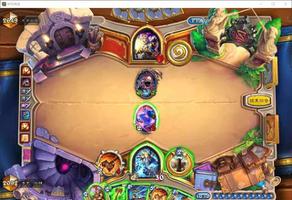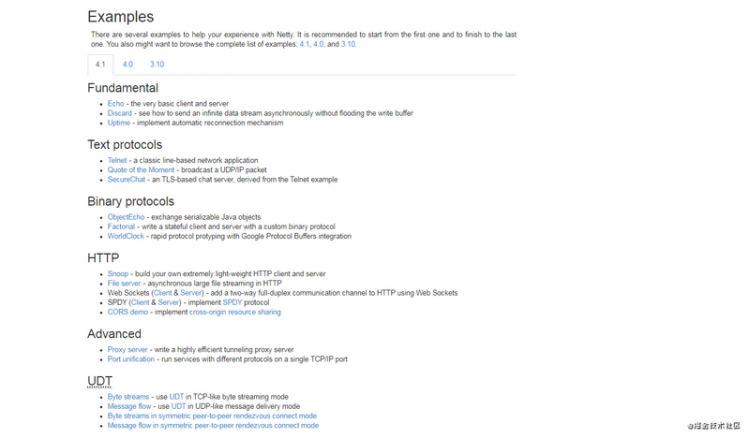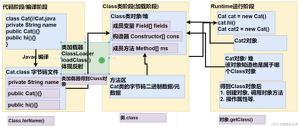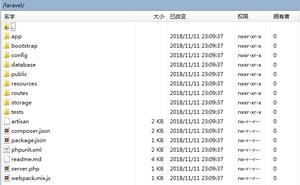Java学习笔记17Netty实战及优化

Java学习笔记17-Netty实战及优化
尝试自己实现
短连接:请求/响应之后,关闭已经建立的TCP连接,下次请求再建立一次连接。
长连接:请求/响应之后,不关闭TCP连接,多次请求,复用同一个连接。
为了避免频繁创建连接/释放连接带来的性能损耗,以及消息获取的实时性,采用长连接的形式。
粘包:Nagle算法-客户端累积一定量或者缓冲一段时间再传输。服务端缓冲区堆积。导致多个请求数据粘在一起。
拆包:发送的数据大于发送缓冲区,进行分片传输。服务端缓冲区堆积,导致服务端读取的请求数据不完整。
使用WebSocket
WebSocket协议是基于TCP的一种新的网络协议。
它的出现实现了浏览器与服务器全双工(full-duplex)通信:允许服务器主动发送信息给客户端。
多客户端多语言多服务器支持:浏览器、php、Java、ruby、nginx、python、Tomcat、erlang、.net等等
连接过程:
- 客户端 请求连接 -- GET /chat HTTP/1.1 -->> 服务端
- 客户端 <<-- HTTP/1.1 101 xxx -- 服务端 返回响应
- 客户端 open <<-- push -- 服务端
- 客户端 -- send -->> 服务端
WebSocket测试代码
WebSocketServer 服务端
import io.netty.bootstrap.ServerBootstrap;import io.netty.channel.*;
import io.netty.channel.nio.NioEventLoopGroup;
import io.netty.channel.socket.SocketChannel;
import io.netty.channel.socket.nio.NioServerSocketChannel;
import io.netty.handler.codec.http.HttpObjectAggregator;
import io.netty.handler.codec.http.HttpServerCodec;
import io.netty.handler.logging.LogLevel;
import io.netty.handler.logging.LoggingHandler;
import java.io.BufferedReader;
import java.io.IOException;
import java.io.InputStreamReader;
public class WebSocketServer {
static int port = 20480;
public static void main(String[] args) throws Exception {
EventLoopGroup mainGroup = new NioEventLoopGroup(1);
EventLoopGroup subGroup = new NioEventLoopGroup();
try {
ServerBootstrap b = new ServerBootstrap();
b.group(mainGroup, subGroup).channel(NioServerSocketChannel.class)
.handler(new LoggingHandler(LogLevel.DEBUG))
.option(ChannelOption.SO_REUSEADDR, true)
.childHandler(new ChannelInitializer<SocketChannel>() {
@Override
protected void initChannel(SocketChannel ch) throws Exception {
ChannelPipeline pipeline = ch.pipeline();
pipeline.addLast(new HttpServerCodec());
pipeline.addLast(new HttpObjectAggregator(65536));
pipeline.addLast(new WebSocketServerHandler());
}
})
.childOption(ChannelOption.SO_REUSEADDR, true);
ChannelFuture f = b.bind(port).addListener(new ChannelFutureListener() {
@Override
public void operationComplete(ChannelFuture future) throws Exception {
System.out.println("端口绑定完成:" + future.channel().localAddress());
}
}).sync();
// 获取键盘输入
BufferedReader input = new BufferedReader(new InputStreamReader(System.in, "UTF-8"));
new Thread(() -> {
String msg;
// 接收从键盘发送过来的数据
try {
System.out.print("请输入信息:");
while ((msg = input.readLine()) != null) {
WebSocketSession.pushMsg(msg);
if (msg.length() == 0) {
break;
}
}
} catch (IOException e) {
e.printStackTrace();
}
}).start();
f.channel().closeFuture().sync();
} finally {
mainGroup.shutdownGracefully();
subGroup.shutdownGracefully();
}
}
}
WebSocketServerHandler 服务端Handler
import io.netty.buffer.ByteBuf;import io.netty.buffer.Unpooled;
import io.netty.channel.ChannelFuture;
import io.netty.channel.ChannelFutureListener;
import io.netty.channel.ChannelHandlerContext;
import io.netty.channel.SimpleChannelInboundHandler;
import io.netty.handler.codec.http.*;
import io.netty.handler.codec.http.websocketx.*;
import io.netty.util.AttributeKey;
import io.netty.util.CharsetUtil;
import java.util.List;
import java.util.Map;
import java.util.concurrent.atomic.LongAdder;
import static io.netty.handler.codec.http.HttpMethod.GET;
import static io.netty.handler.codec.http.HttpResponseStatus.BAD_REQUEST;
import static io.netty.handler.codec.http.HttpVersion.HTTP_1_1;
public class WebSocketServerHandler extends SimpleChannelInboundHandler<Object> {
private static final String WEBSOCKET_PATH = "/websocket";
private WebSocketServerHandshaker handshaker;
public static final LongAdder counter = new LongAdder();
@Override
public void channelRead0(ChannelHandlerContext ctx, Object msg) {
counter.add(1);
if (msg instanceof FullHttpRequest) {
System.out.println("Http请求");
handleHttpRequest(ctx, (FullHttpRequest) msg);
} else if (msg instanceof WebSocketFrame) {
System.out.println("WebSocket请求");
handleWebSocketFrame(ctx, (WebSocketFrame) msg);
}
}
@Override
public void channelReadComplete(ChannelHandlerContext ctx) {
ctx.flush();
}
@Override
public void exceptionCaught(ChannelHandlerContext ctx, Throwable cause) {
cause.printStackTrace();
ctx.close();
}
private void handleHttpRequest(ChannelHandlerContext ctx, FullHttpRequest req) {
// 如果http解码失败,则返回http异常,并且判断消息头有没有包含Upgrade字段(协议升级)
if (!req.decoderResult().isSuccess() || req.method() != GET || (!"websocket".equals(req.headers().get("Upgrade")))) {
System.out.println("Http异常");
sendHttpResponse(ctx, req, new DefaultFullHttpResponse(HTTP_1_1, BAD_REQUEST));
return;
}
// 构造握手响应返回
WebSocketServerHandshakerFactory wsFactory = new WebSocketServerHandshakerFactory(
getWebSocketLocation(req), null, true, 5 * 1024 * 1024);
handshaker = wsFactory.newHandshaker(req);
if (handshaker == null) {
// 版本不支持
WebSocketServerHandshakerFactory.sendUnsupportedVersionResponse(ctx.channel());
} else {
System.out.println("WebSocket握手响应");
handshaker.handshake(ctx.channel(), req);
// 解析请求,判断token
Map<String, List<String>> parameters = new QueryStringDecoder(req.uri()).parameters();
// 连接限制,需要验证token,拒绝陌生连接
String token = parameters.get("token").get(0);
// 保存token
ctx.channel().attr(AttributeKey.valueOf("token")).getAndSet(token);
// 保存会话
WebSocketSession.saveSession(token, ctx.channel());
// 结束
}
}
private void handleWebSocketFrame(ChannelHandlerContext ctx, WebSocketFrame frame) {
// 关闭
if (frame instanceof CloseWebSocketFrame) {
Object token = ctx.channel().attr(AttributeKey.valueOf("token")).get();
WebSocketSession.removeSession(token.toString());
handshaker.close(ctx.channel(), (CloseWebSocketFrame) frame.retain());
return;
}
// ping/pong作为心跳
if (frame instanceof PingWebSocketFrame) {
System.out.println("ping: " + frame);
ctx.write(new PongWebSocketFrame(frame.content().retain()));
return;
}
// 文本
if (frame instanceof TextWebSocketFrame) {
String text = ((TextWebSocketFrame) frame).text();
String outStr = text
+ ", 欢迎使用Netty WebSocket服务, 现在时刻:"
+ new java.util.Date().toString();
System.out.println("收到:" + text);
System.out.println("发送:" + outStr);
//发送到客户端websocket
ctx.channel().write(new TextWebSocketFrame(outStr));
return;
}
// 不处理二进制消息
if (frame instanceof BinaryWebSocketFrame) {
// Echo the frame
ctx.write(frame.retain());
}
}
private static void sendHttpResponse(ChannelHandlerContext ctx, FullHttpRequest req, FullHttpResponse res) {
// Generate an error page if response getStatus code is not OK (200).
if (res.status().code() != 200) {
ByteBuf buf = Unpooled.copiedBuffer(res.status().toString(), CharsetUtil.UTF_8);
res.content().writeBytes(buf);
buf.release();
HttpUtil.setContentLength(res, res.content().readableBytes());
}
// Send the response and close the connection if necessary.
ChannelFuture f = ctx.channel().writeAndFlush(res);
if (!HttpUtil.isKeepAlive(req) || res.status().code() != 200) {
f.addListener(ChannelFutureListener.CLOSE);
}
}
private static String getWebSocketLocation(FullHttpRequest req) {
String location = req.headers().get(HttpHeaderNames.HOST) + WEBSOCKET_PATH;
return "ws://" + location;
}
}
WebSocketSession 服务端会话连接池
import io.netty.channel.Channel;import io.netty.handler.codec.http.websocketx.TextWebSocketFrame;
import java.util.Random;
import java.util.concurrent.ConcurrentHashMap;
public class WebSocketSession {
/**
* 会话连接池
*/
static ConcurrentHashMap<String, Channel> sessionMap = new ConcurrentHashMap<>();
/**
* 保存会话
*
* @param sessionID
* @param channel
*/
public static void saveSession(String sessionID, Channel channel) {
sessionMap.put(sessionID, channel);
}
/**
* 移除会话
*
* @param sessionID
*/
public static void removeSession(String sessionID) {
sessionMap.remove(sessionID);
}
/**
* 推送消息
* @param msg
*/
public static void pushMsg(String msg) {
try {
if (sessionMap.isEmpty()) {
return;
}
int size = sessionMap.size();
ConcurrentHashMap.KeySetView<String, Channel> keySetView = sessionMap.keySet();
String[] keys = keySetView.toArray(new String[]{});
System.out.println(WebSocketServerHandler.counter.sum() + " : 当前用户数量" + keys.length);
for (int i = 0; i < size; i++) {
// 提交任务给它执行
String key = keys[new Random().nextInt(size)];
Channel channel = sessionMap.get(key);
if (channel == null) {
continue;
}
if (!channel.isActive()) {
sessionMap.remove(key);
continue;
}
channel.eventLoop().execute(() -> {
System.out.println("推送:" + msg);
channel.writeAndFlush(new TextWebSocketFrame(msg));
});
}
} catch (Exception ex) {
ex.printStackTrace();
}
}
}
WebSocketClient 客户端
import io.netty.bootstrap.Bootstrap;import io.netty.channel.*;
import io.netty.channel.nio.NioEventLoopGroup;
import io.netty.channel.socket.SocketChannel;
import io.netty.channel.socket.nio.NioSocketChannel;
import io.netty.handler.codec.http.HttpClientCodec;
import io.netty.handler.codec.http.HttpObjectAggregator;
import io.netty.handler.codec.http.websocketx.extensions.compression.WebSocketClientCompressionHandler;
import io.netty.handler.logging.LogLevel;
import io.netty.handler.logging.LoggingHandler;
public class WebSocketClient {
static String host = "127.0.0.1";
static int port = 20480;
public static void main(String[] args) throws Exception {
EventLoopGroup group = new NioEventLoopGroup();
try {
Bootstrap b = new Bootstrap();
b.group(group).channel(NioSocketChannel.class)
.handler(new LoggingHandler(LogLevel.DEBUG))
.option(ChannelOption.SO_REUSEADDR, true)
.handler(new ChannelInitializer<SocketChannel>() {
@Override
protected void initChannel(SocketChannel ch) {
ChannelPipeline p = ch.pipeline();
p.addLast(new HttpClientCodec());
p.addLast(new HttpObjectAggregator(8192));
p.addLast(WebSocketClientCompressionHandler.INSTANCE);
p.addLast(new WebSocketClientHandler());
}
});
ChannelFuture f = b.connect(host, port).sync();
f.channel().closeFuture().sync();
} finally {
group.shutdownGracefully();
}
}
}
WebSocketClientHandler 客户端Handler
import io.netty.channel.*;import io.netty.handler.codec.http.DefaultHttpHeaders;
import io.netty.handler.codec.http.FullHttpResponse;
import io.netty.handler.codec.http.websocketx.*;
import io.netty.util.CharsetUtil;
import java.net.InetSocketAddress;
import java.net.URI;
import java.util.concurrent.atomic.AtomicInteger;
public class WebSocketClientHandler extends SimpleChannelInboundHandler<Object> {
private static final String WEBSOCKET_PATH = "/websocket";
private WebSocketClientHandshaker handshaker;
private ChannelPromise handshakeFuture;
static AtomicInteger counter = new AtomicInteger(0);
public ChannelFuture handshakeFuture() {
return handshakeFuture;
}
@Override
public void handlerAdded(ChannelHandlerContext ctx) {
handshakeFuture = ctx.newPromise();
}
@Override
public void channelActive(ChannelHandlerContext ctx) {
if (handshaker == null) {
InetSocketAddress address = (InetSocketAddress) ctx.channel().remoteAddress();
URI uri = null;
try {
uri = new URI("ws://" + address.getHostString() + ":" + address.getPort()
+ WEBSOCKET_PATH + "?token=" + counter.incrementAndGet());
} catch (Exception e) {
e.printStackTrace();
}
handshaker = WebSocketClientHandshakerFactory.newHandshaker(
uri, WebSocketVersion.V13, null, true, new DefaultHttpHeaders());
}
handshaker.handshake(ctx.channel());
}
@Override
public void channelInactive(ChannelHandlerContext ctx) {
System.out.println("客户端已断开");
}
@Override
public void channelRead0(ChannelHandlerContext ctx, Object msg) throws Exception {
Channel ch = ctx.channel();
if (!handshaker.isHandshakeComplete()) {
try {
handshaker.finishHandshake(ch, (FullHttpResponse) msg);
System.out.println("客户端已连接");
handshakeFuture.setSuccess();
} catch (WebSocketHandshakeException e) {
System.out.println("客户端连接失败");
handshakeFuture.setFailure(e);
}
return;
}
if (msg instanceof FullHttpResponse) {
FullHttpResponse response = (FullHttpResponse) msg;
throw new IllegalStateException(
"Unexpected FullHttpResponse (getStatus=" + response.status() +
", content=" + response.content().toString(CharsetUtil.UTF_8) + ")");
}
WebSocketFrame frame = (WebSocketFrame) msg;
if (frame instanceof TextWebSocketFrame) {
TextWebSocketFrame textFrame = (TextWebSocketFrame) frame;
System.out.println("已收到:" + textFrame.text());
} else if (frame instanceof PongWebSocketFrame) {
System.out.println("收到心跳");
} else if (frame instanceof CloseWebSocketFrame) {
System.out.println("收到关闭");
ch.close();
}
}
@Override
public void exceptionCaught(ChannelHandlerContext ctx, Throwable cause) {
cause.printStackTrace();
if (!handshakeFuture.isDone()) {
handshakeFuture.setFailure(cause);
}
ctx.close();
}
}
Linux服务器优化
网络小知识:区分不同连接的方式,TCP连接四元组
服务器IP+服务器PORT+客户端IP+客户端PORT
服务器最大连接数:理论上是无限的,但在Linux中会受到最大文件连接数、内存等的影响,在TCP、UDP协议的开头,会分别有16位来存储源端口号和目标端口号,2^16-1=65535个,所以传输层协议限制了最多只有65535个端口,但实际可以通过重复使用端口来提高连接数。
# 进程级最大文件连接数vi /etc/security/limits.conf
* soft nofile 1000000
* hard nofile 1000000
vi /etc/sysctl.conf
fs.file-max=1000000 #系统级最大文件连接数
net.ipv4.ip_local_port_range=1024 65535 #新连接本地端口范围
net.ipv4.tcp_tw_reuse=1 #开启重新使用
net.ipv4.tcp_tw_recycle=1 #开启加速回收
sysctl -p
Netty优化
1. Handler对象复用
@ChannelHandler.Sharable 标识为可共享
每个连接一个Channel,独占一个Pipeline
Pipeline共享handler对象,不再new handler()
注意:防止handler中有共享变量,导致线程安全问题。
2. 耗时操作引入业务线程池
处理过程中,耗时业务逻辑会占用I/O线程导致阻塞,应单独交给指定线程池处理
可在添加handler的时候,指定EventLoopGroup业务专属线程池
pipeline.addLast(businessGroup, businessHandller);
3. 响应内容,必定经过Netty I/O
查看源码可知,业务handler中write最终会通过Netty I/O发送
单次write数据量过大,会导致I/O线程被一个连接长时间占用,导致用户体验变差
可调整操作系统TCP缓存区大小
业务handler中将单次数据量过大的write,分批多次进行小数据量的write,加快运转速度,提高用户体验。
4. ByteBuf复用机制
NIOEventLoop收到Selector通知,然后进入read环节,申请一个ByteBuf对象,作为数据的载体,最后转交handler进行业务处理,ByteBuf采用引用计数,Release释放之后才能被回收,ByteBuf对象可通过ctx.write(msg)来进行ReferenceCountUtil.release()释放,也可通过((ByteBuf) msg).release()释放,来进行ByteBuf回收复用。
优化2-提高请求/推送的吞吐量
- 业务操作提交到单独的线程执行。
- 调整TCP缓冲区大小,提高网路吞吐量。
- 基于Netty框架开发时,业务代码逻辑的调优。
- 结合Netty框架特点,复用对象,实现性能提升。
小结
- 并发连接数主要靠操作系统参数调优;
- 吞吐量的提升,主要靠代码处理能力来提升;
- 有时候网络和磁盘会成为瓶颈;
- 水平扩展,集群的方式是最终方案;
- Netty框架的运作机制很重要;
以上是 Java学习笔记17Netty实战及优化 的全部内容, 来源链接: utcz.com/z/511365.html








